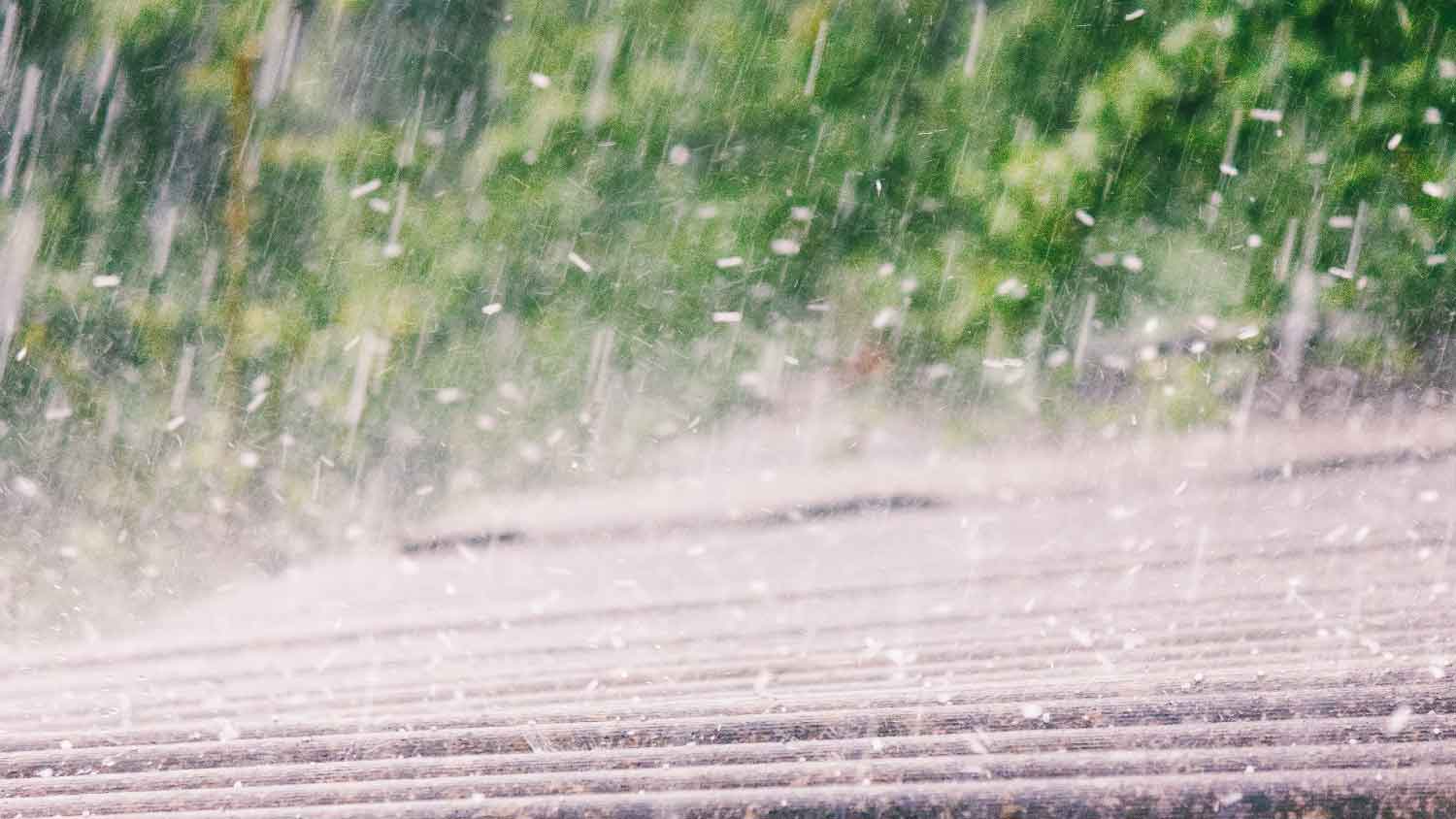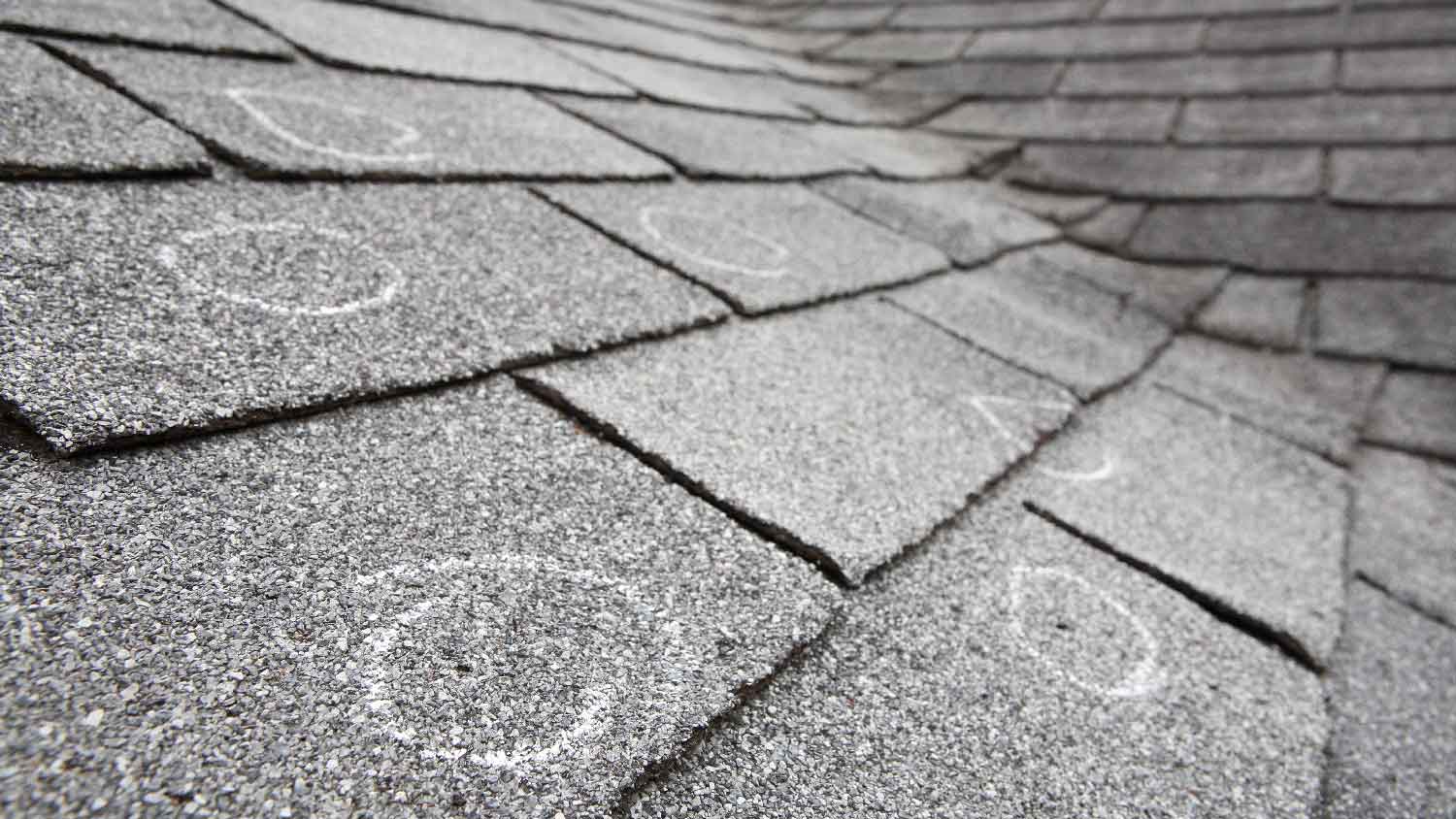The cost of fixing a roof can be high, making it critical to understand the cause of the damage. While you might assume that the spots on your roof after a big storm are from hail, they could actually be roof blisters, which can be caused by various factors. Roof blistering indicates problems with ventilation or moisture, so knowing how to identify it can help you address underlying issues that could compromise the integrity of your roof.
What Are the Differences Between Roof Blisters and Hail Damage?

Photo: Andrey Solovev / Adobe Stock
While hail damage and roof blisters look alike, the core difference between them is that hail damage is caused by—you guessed it—hail, while roof blisters have a number of causes, including:
- Poor attic ventilation
- Trapped moisture underneath shingles
- Tree sap
In addition, there are some slight visual differences to note. Hail damage often looks like randomly scattered dark spots, dents, or depressions on the roof’s surface, while blisters resemble small bubbles or raised areas on shingles and leave a raised circle around them when they pop. Blisters can pop during extreme weather events, which can damage your shingles, create gutter drainage issues, or lead to energy loss, leading to a drafty attic or house.
| Type of Difference | Roof Blisters | Hail Damage |
|---|---|---|
| Shape | Raised bubbles | Dents/depressions |
| Pattern | Random | Regular pattern |
| Cause | Several | Hail/extreme weather |
Blisters vs. Hail Damage: Differences in Appearance

Photo: soupstock / Adobe Stock
At first glance, blisters and hail damage appear nearly identical. However, there are a few key differences in their appearance that will become apparent if you know what to look for. Ultimately, regardless of the source, it’s wise to have a roof repair or hail damage repair company near you complete an inspection to ensure all the issues have been taken care of.
Size
The size of roof blisters can vary, depending on the cause. Hail damage, however, is never going to be larger than the hail itself.
Shape
Roof blisters often take the shape of protruding bubbles, while hail damage leaves behind dents and depressions on your roof.
Pattern
Hail damage often creates a pattern on the roof depending on which way the wind was blowing during the storm. Blistering, however, occurs much more randomly. If you don’t notice a recognizable pattern on the roof, you’re probably dealing with blistering.
Causes
There are many causes of roof blisters. They might form because of trapped moisture between they layers of the roofing material, prolonged exposure to the sun, tree sap, or poor attic ventilation. Hail damage, however, is caused by hail and hail alone.
Related Damage
Take a look around your home’s exterior and see if you notice any other signs of damage. Hail often leaves indents on any metal in your home, such as on your gutters. There might also be roofing granules in your gutters or downspouts. Blistering will be contained to the roof, and you might see some shingle granule loss where the blisters have grown and popped.
Roof Blister Prevention
There are a number of steps to take to prevent roof blisters since there are so many potential causes. Be sure to:
- Promote good attic ventilation that allows heat to escape
- Install a roof with high-quality roofing materials
- Conduct regular roof inspections to detect blistering and other issues early
- Keep your roof clean and free from debris to minimize moisture buildup
Hail Damage Prevention
It’s difficult to fully prevent damage from natural events, but there are hail-resistant roofing materials that can minimize the impacts of this extreme weather. Choose a rubber or metal roof—ideally copper or steel—if you live in an area prone to hail storms.
Frequently Asked Questions
How big does hail need to be to damage a roof?
In general, hailstones need to be at least one inch in diameter to cause damage to a roof. Smaller hailstones can also cause damage, but usually only if accompanied by strong winds or striking aging roofs in poor condition. Obviously, the larger the hail, the more potential for damage.
Should you replace your roof after a hail storm?
Some hail storms can cause serious damage to your roof and shingles, but unless your roof is aging or already in poor condition, it’s unlikely to necessitate a full roof replacement. It is rare for an insurance company to approve a roof replacement after a hailstorm.
What is the best roofing material for hail?
Choose a roofing material with a Class 4 UL rating. The UL 2218 Impact Rating tests how well roofing materials can resist damage. Most metal roofs and rubber have Class 4 ratings. Rubber is light and affordable, causing hail to bounce right off when it hits.









